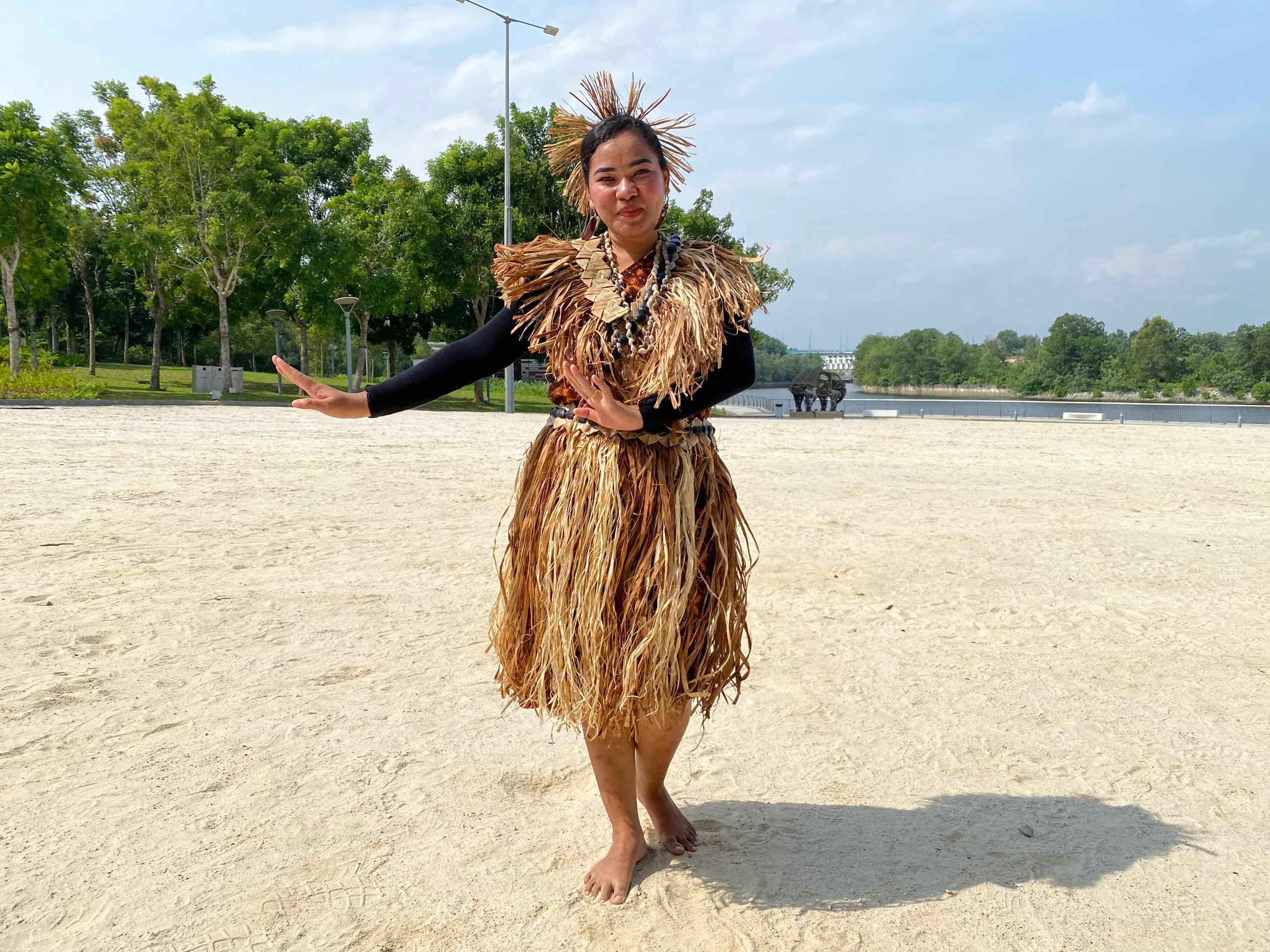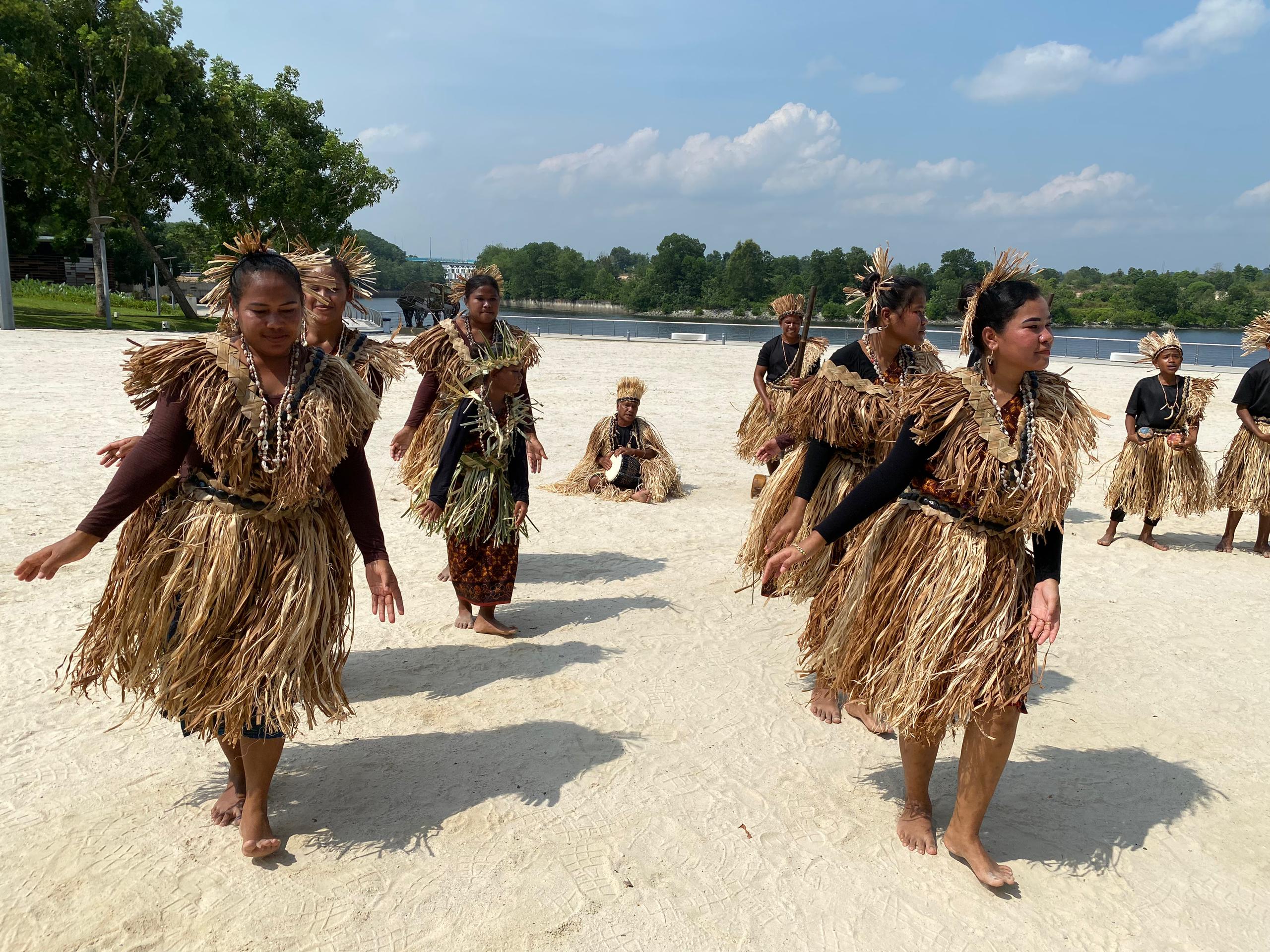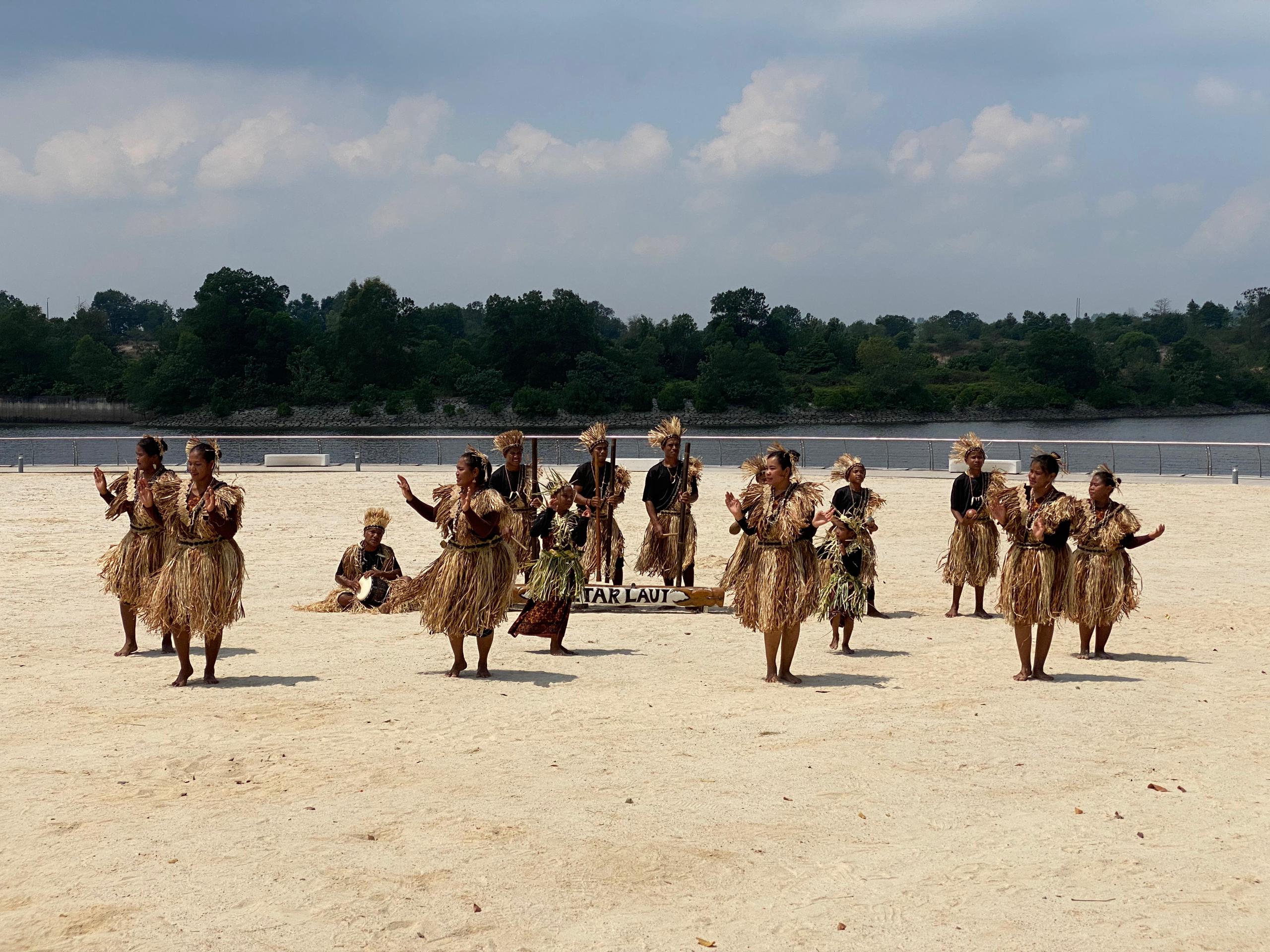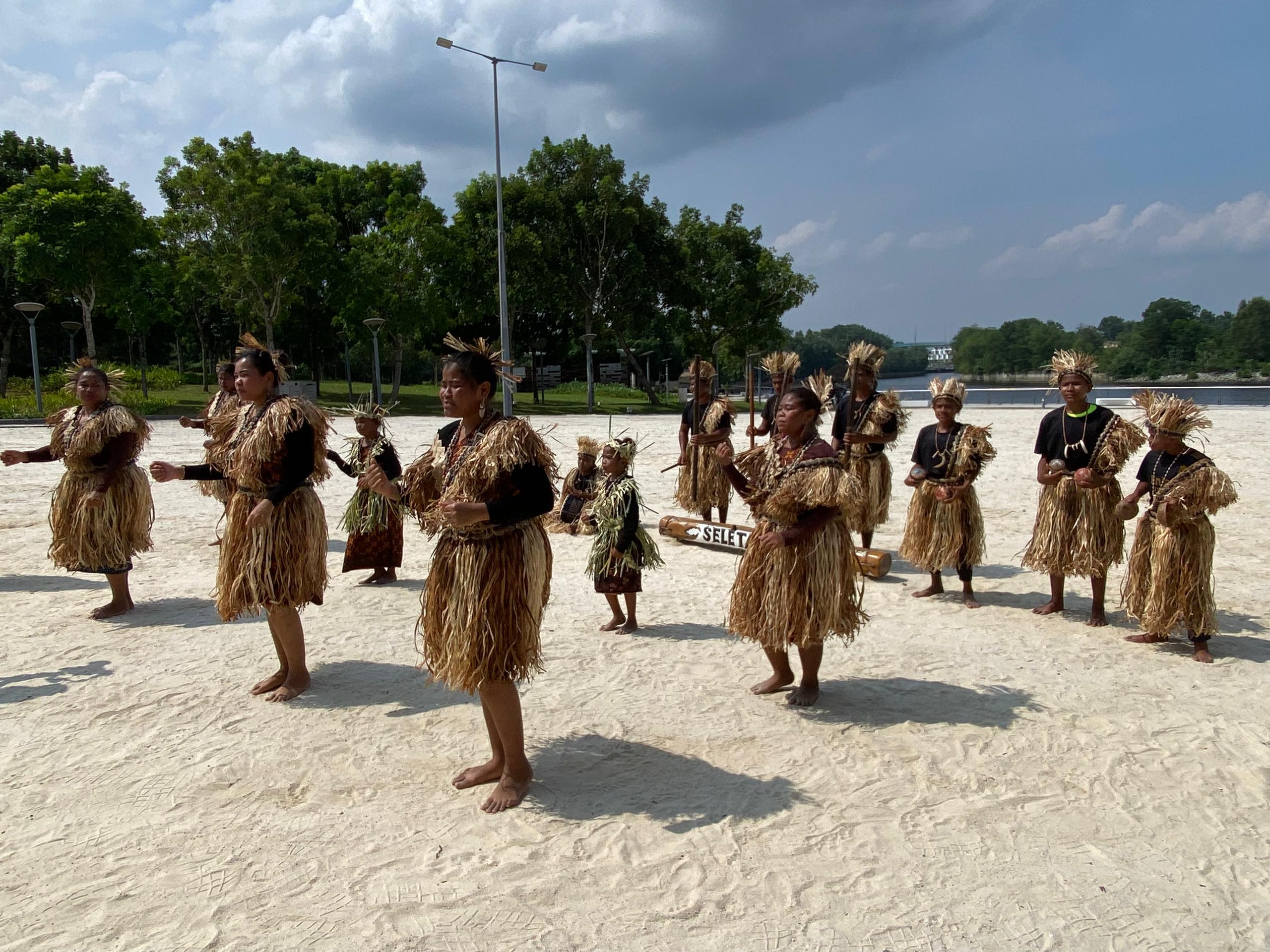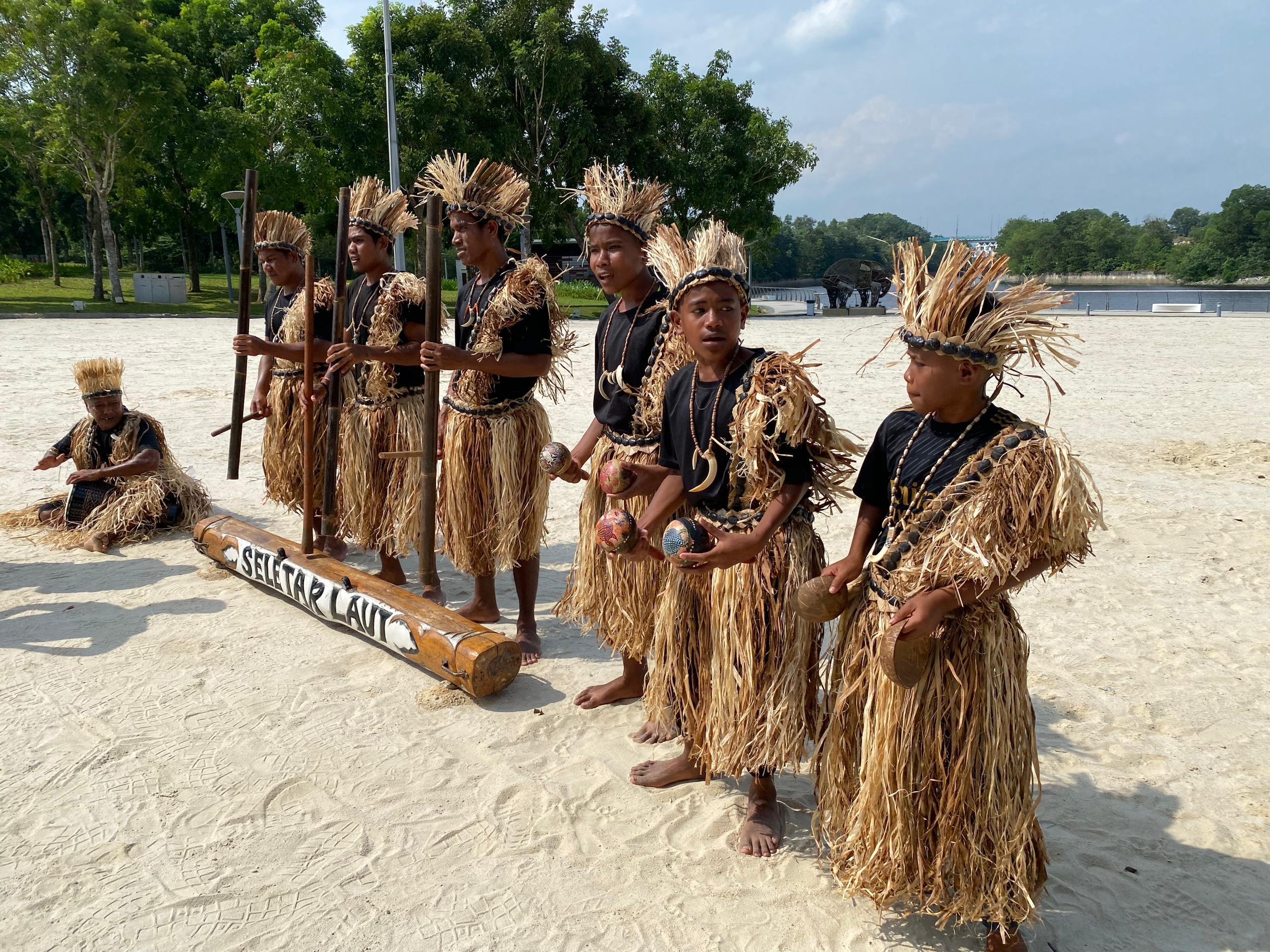ARTS AND CULTURE INFORMATION GATEWAY
Immerse yourself in the colorful world of art and culture! From traditional heritage to contemporary works, discover uniqueness that reflects the nation's identity and identity
TARIAN ORANG ASLI SELETAR
Picture
9
Video
Available
Today's Visitor
36
Number of Visitors
658
Introduction and history
The Orang Asli Seletar are one of the 18 sub-ethnic groups within the Orang Asli communities of Malaysia. Taxonomically, they are classified under the Proto-Malay group, alongside other sub-groups such as the Mah Meri, Jakun, Temuan, and Orang Kuala (Nicholas, 2000). The Seletar community possesses a distinct historical background, as they are part of the Orang Laut (Sea People), who have traditionally led a nomadic maritime lifestyle, migrating continuously in search of marine resources that constitute their primary means of subsistence.
In terms of settlement patterns, the Seletar originally inhabited coastal areas, river estuaries, and small islands, particularly in the waters surrounding Johor and Singapore. Today, their principal settlements in Johor include Kampung Sungai Temon in Danga Bay, Johor Bahru; Kampung Bakar Batu in Kulai; and several smaller settlements along Johor’s southern coastline.
Historically, the Seletar people are believed to have originated from the Orang Laut groups who once inhabited the Seletar Swamp and Seletar Island in Singapore.
They were among the earliest indigenous inhabitants of Singapore before the onset of modern migration and urbanization. In the mid-20th century, a portion of the Seletar community relocated to Johor as a result of administrative planning by the Johor government under Sultan Abu Bakar, particularly in the Sungai Pulai area, where they established permanent settlements.
As a community deeply connected to the maritime environment, their dances, songs, and rituals are heavily influenced by elements of nature such as the sea, waves, wind, crabs, clams, and mollusks. The Seletar dance is often performed during ceremonies to seek protection and bountiful sustenance from the "Sea Deity," especially during the monsoon season when marine resources become scarce. Through this ritual, they express their hardship and pleas for mercy to be protected from natural disasters and to be blessed with abundant provisions. The dance movements imitate the rippling of waves and the blowing of sea winds, with footwork symbolizing the act of wading through water, accompanied by songs filled with praises and supplications to the Sea Deity.
The Orang Asli Seletar Dance plays several important roles within its community. Firstly, it serves a ritualistic function, performed during ceremonies to seek blessings and protection from the Sea Deity. The dance reflects the close relationship the Seletar people have with their natural environment, particularly in facing the uncertainties of marine resources during the monsoon season.
Beyond its ritualistic purpose, the dance also functions as a primary form of entertainment within the village community. It is often performed during social gatherings such as feasts, weddings, welcoming ceremonies for guests, and annual communal celebrations. Through these performances, members of the community gather, interact, and strengthen familial and social bonds.
In the context of modernization and external cultural influences, the dance also serves as a mechanism for preserving cultural identity. It helps to reinforce the Seletar ethnic identity and ensures that their cultural heritage is passed down to younger generations. In addition to being performed within their community, the dance is frequently showcased at district, state, and national levels as part of efforts to introduce and promote the cultural heritage of the Seletar Indigenous People to the wider public.
During the performance of the traditional dance, Seletar Indigenous dancers wear costumes made entirely from natural materials sourced from their surrounding environment. The main material used is the bark of the Sebaru tree, a type of mangrove that grows along the coastal areas. The process of producing the costume begins with the careful selection of suitable tree bark, followed by cleaning, sun-drying, and curing, which typically takes about a month. Once dried, the bark is meticulously woven by approximately six community members to create a complete set of attire.
One of the main musical instruments used in the Seletar Indigenous dance is the buluh cehtong. This instrument falls under the category of idiophones, which produce sound through the vibration of the material itself, without the need for strings, membranes, or air columns. The buluh cehtong is made from bamboo stalks cut into various sizes to produce different pitches. It is played collectively, where each musician takes turns striking the bamboo sticks against the floor, creating a pleasant and repetitive rhythm. The resulting beat not only accompanies the dancers’ movements but also forms the core foundation for the entire atmosphere of the performance.
In addition to the buluh cehtong, the tabla is also used in these performances. The tabla is a two-surface percussion instrument originating from Indian culture. Its inclusion in the Seletar dance reflects the assimilation and adaptation of external cultural elements into the performing arts of this community. The sound produced by the tabla adds rhythmic variation, enriching the existing musical layers and providing strength to the tempo of the dance movements.
Furthermore, the makasar instrument is also played during performances. It is made from processed coconut shells that produce sound when struck. The makasar contributes an additional rhythmic element that is unique, enhancing the natural characteristics that are central to the Seletar Indigenous cultural identity, which is deeply connected to nature.
In some modern performances, a mixer or electronic sound control system is also utilized. The use of the mixer ensures a balanced sound between all musical instruments and vocals, especially during larger stage performances or formal events. With the assistance of this technology, the entire performance can be enjoyed clearly by the audience without diminishing the traditional values presented.
The dance possesses its unique characteristics, as it reflects the close symbiotic relationship between humans and the marine environment, which serves as their primary source of livelihood. The concept of this performance is rooted in the daily experiences of the Seletar community, which are deeply connected to the maritime ecosystem. As such, the dance movements and foot rhythms of the dancers are typically synchronized with the themes of the songs performed throughout the presentation.
Several types of songs are performed during the dance, each carrying specific meanings depending on the occasion being celebrated. For instance, the song Ketam Jengkeng is often performed during wedding ceremonies. This song symbolizes crabs emerging from the rising tide, representing fertility and the beginning of a new phase in married life. Meanwhile, the song Daeng Neng Kai is performed during ceremonies honoring the ancestors, expressing gratitude and respect towards previous generations. The song Oghayo-Oghayo carries the theme of hunting and foraging experiences, reflecting the Seletar people's traditional economic activities, which rely on the bounty of the sea and forest.
Mr. Jahan bin Tom. Persatuan Tarian Orang Asli Seletar Sg. Temun. Kg. Orang Asli Sungai, Temon, Johor Bahru.
Reference Source
Bahan Bacaan
Seletar Community. (2019, November 21). Tarian dan nyanyian rakyat
Orang Seletar [Video]. YouTube.
https://www.youtube.com/watch?v=o8hDReyNmzw
Seletar Dance Johor. (2020, March 15). Tari Seletar (Seletar Dance)
[Video]. YouTube. https://www.youtube.com/watch?v=zVoDdNTI9RM
Warisan Seletar Malaysia. (2021, October 10). Tarian Ketam Bangkang
Kaum Orang Asli Seletar [Video]. YouTube.
https://www.youtube.com/watch?v=woQPMclYkAs
Festival Orang Asli Malaysia. (2022, April 1). Festival Orang Asli dan
Peribumi: Seletar Laut [Video]. YouTube.
https://www.youtube.com/watch?v=yVazeXEGpFw
Kebudayaan Orang Seletar. (2023, August 15). Persembahan Tarian
Seletar Kampung Sungai Temon [Video]. Facebook.
https://www.facebook.com/penjaga.ikan/
Amazing Johor Culture. (2023, September 5). ‘Ketam Bangkang’ Dance
from Orang Asli Tribe of Seletar [Video]. Facebook.
https://www.facebook.com/100071195323268/videos/amazing-ketam-
bangkang-dance-from-orang-asli-tribe-of-seletar-from-johor-
bharumy/875730265897971/
Shamsir, S. I., Muda, M., & Hassan, Z. A. (2024). Kegiatan sosioekonomi
Orang Asli Seletar di Kampung Bakar Batu, Johor Bahru. e-BANGI, 21(3),
376–391.
Rosnon, M. R., Abdul Razak, M. A., & Jalaludin, M. L. (2024). Exploring the
subjective well-being of elderly Orang Seletar indigenous people in Johor,
Malaysia. Journal of Infrastructure, Policy and Development, 8(8), 2606.
Zal, W. A. (2013). Pembentukan modal insan Orang Asli Darat dan Laut di
Malaysia (The human capital formation amongst Orang Asli Darat (Forest
people) and Orang Asli Laut (Sea people) in Malaysia). Geografia, 9(4).
Ani, F., Yusoff, R. M., Damin, Z. A., Jaes, L., Johar, S. S., Nordin, S. R. A.,
... & Ismail, F. (2018). Menyelusuri asimilasi budaya kaum Orang Asli Suku
Kuala di Sungai Layau, Kota Tinggi. Human Sustainability Procedia.
Roddin, R., Yusof, Y., Mukhtar, M. I., Mohamad, M. M., Razzaq, A. R. A.,
Jalil, S. A., & Hariri, T. I. A. A. (2019). Keupayaan komuniti Orang Asli suku
kaum Seletar di Johor Bahru melalui keusahawanan berasaskan
pelancongan. International Journal of Social Science Research, 1(2), 9–22.
ii. Tokoh (jika ada temu bual tokoh)
Encik Jahan bin Tom. Persatuan Tarian Orang Asli Seletar Sg. Temun. Kg.
Orang Asli Sungai, Temon, Johor Bahru.
Location
State JKKN Contact Information
Puan Norazlina binti Othman
Cultural Officer
Jabatan Kebudayaan dan Kesenian Negara, Johor
Aras 6 Kiri, Wisma PERKESO
No 26, Jalan Susur 5
Off Jalan Tun Abdul Razak, Larkin
80200 Johor Bahru
JOHOR DARUL TAKZIM
07-224 8270 / 223 1249

 Kg. Orang Asli Sungai, Temon, Johor Bahru.
Kg. Orang Asli Sungai, Temon, Johor Bahru.